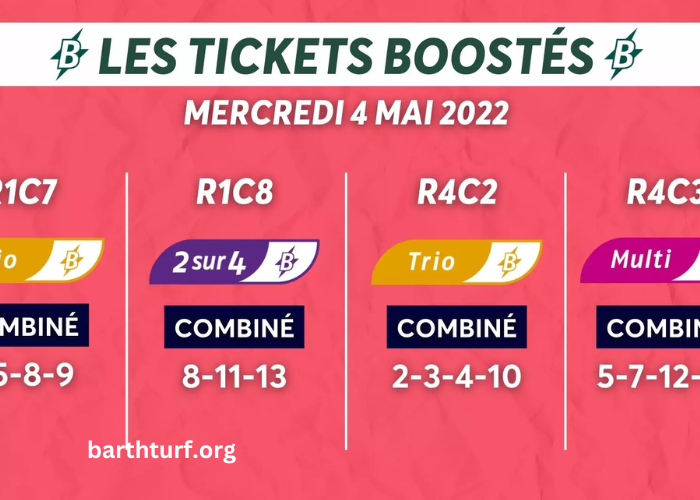The term Gain Du Jour translates to “Gain of the Day” and is commonly used in finance and betting to refer to the profit or return that has been made within a specific day. This can relate to various activities, from financial markets to horse racing and sports betting. Understanding Gain Du Jour is essential for both novice and experienced investors or bettors because it helps to measure success and make more informed decisions.
In recent years, Gain Du Jour has gained popularity as an indicator of short-term profit. Many investors and bettors are particularly focused on the daily returns as a way to assess their strategies. This approach allows them to quickly adjust their tactics for the next day, increasing their chances of maximizing profits. Moreover, Gain Du Jour offers a simple and effective way to track progress, especially in industries where short-term fluctuations are common.
As the concept continues to evolve, Gain Du Jour has become an integral part of financial planning, betting strategies, and overall risk management. Whether in finance, sports betting, or horse racing, those who pay attention to daily gains are better positioned to make strategic decisions that can lead to long-term success.
What Is Gain Du Jour?
Gain Du Jour is a French term meaning “Gain of the Day,” and it refers to the daily profit or gain realized in various fields such as finance, sports betting, and other forms of speculation. In finance, Gain Du Jour can be the difference between the closing price of an asset and its opening price, reflecting how much profit has been made on that particular day. In betting, it refers to the amount won in a single day, especially when looking at a specific series of bets or wagers.
Understanding Gain Du Jour is crucial because it allows investors, traders, and bettors to evaluate the effectiveness of their strategies in the short term. By tracking these daily gains, individuals can make better decisions on how to adjust their strategies for the next day or event. It is a snapshot of success and a powerful tool for making real-time adjustments in fast-paced environments like the stock market or sports betting.
When discussing Gain Du Jour, it’s important to remember that this term reflects short-term profits. This can be both exciting and risky, as gains made in a day do not always translate into consistent long-term success. While Gain Du Jour offers valuable insights, it must be understood in the context of overall financial or betting strategies.
How Is Gain Du Jour Calculated?
The calculation of Gain Du Jour depends on the specific field in which it is being applied. In the stock market, for instance, Gain Du Jour is often calculated by subtracting the opening price of a security from its closing price. This gives traders a clear indication of how much profit has been made from that particular stock on that day. For example, if a stock opened at $100 and closed at $110, the Gain Du Jour would be $10.
In the world of betting, Gain Du Jour is calculated by tracking the results of bets placed during the day. The total profit is determined by the difference between the amount wagered and the amount won. If a bettor places several successful wagers, the sum of those winnings would be the Gain Du Jour. The calculation is fairly straightforward, but it can vary based on the type of bet and the betting platform being used.
For those involved in horse racing, Gain Du Jour works similarly. Each successful bet made during a day’s races is added together to determine the total profit. This allows bettors to see how much they’ve earned during a specific event or day of racing. As with other areas, the key to maximizing Gain Du Jour is to consistently place informed and strategic bets.
Why Is Gain Du Jour Important?
The importance of Gain Du Jour lies in its ability to offer immediate feedback on financial or betting decisions. In sectors where profits fluctuate on a daily basis, such as the stock market or sports betting, the ability to track Gain Du Jour allows individuals to gauge the effectiveness of their strategies. This is especially crucial for those who are focused on short-term gains rather than long-term investments.
For investors in particular, Gain Du Jour is vital because it allows them to measure how their portfolio is performing on a day-to-day basis. While long-term returns are important, the daily fluctuations in the market can provide valuable insights into how well a particular investment strategy is working. By monitoring Gain Du Jour, investors can make quick decisions to buy or sell assets based on real-time performance.
In sports betting, Gain Du Jour is equally crucial. It helps bettors track their success and adjust their betting strategies accordingly. Bettors who focus on daily gains can identify which bets are working and which are not. This allows them to refine their approach, ensuring they are more likely to make profitable decisions in the future.
How Can Gain Du Jour Be Used to Improve Betting Strategies?
For those involved in sports betting, Gain Du Jour is a useful tool for refining betting strategies. By monitoring daily gains, bettors can assess the effectiveness of their picks and identify trends or patterns that lead to successful bets. For example, if a bettor has a string of successful days, they may conclude that their betting strategy is sound and continue to follow it. Conversely, if they see a string of losses, it may indicate that their approach needs to be adjusted.
To effectively use Gain Du Jour in betting, it’s essential to track each day’s results meticulously. By keeping a record of daily gains, bettors can analyze their betting history and determine which types of bets yield the best results. For instance, some bettors may find that they are more successful with certain types of races or events, and using Gain Du Jour data will help them target those areas more effectively.
Furthermore, Gain Du Jour can help bettors manage their bankroll more effectively. By understanding how much profit is being made on a daily basis, bettors can adjust their wagers to avoid risking too much on any single bet. This can help ensure that the bettor stays within their limits while still capitalizing on profitable opportunities.
How Does Gain Du Jour Relate to Risk Management?
In both finance and betting, Gain Du Jour is closely tied to risk management. One of the most important aspects of successful investing and betting is understanding how much risk you are willing to take. By monitoring Gain Du Jour, individuals can assess whether their strategies are yielding the expected returns or if they need to adjust their risk levels.
For investors, Gain Du Jour provides a snapshot of how much risk is being taken on a daily basis. If the daily gains are high, it may be an indication that the investor is taking on more risk than they initially intended. Conversely, if the gains are low, it might signal that the investor is playing it too safe and could benefit from taking on slightly more risk.
In betting, Gain Du Jour helps to determine how much risk should be placed on a single bet. By analyzing previous daily gains, bettors can adjust their wagers to match their desired level of risk. This level of awareness allows individuals to optimize their betting strategies, ensuring that they do not overextend themselves while still taking advantage of profitable opportunities.
What Are the Risks of Focusing Too Much on Gain Du Jour?
While Gain Du Jour can be a valuable tool, there are also risks associated with focusing too much on daily gains. One of the biggest risks is the temptation to chase short-term profits, leading to impulsive decisions that may not be in line with long-term objectives. In both finance and betting, it’s essential to maintain a balanced approach and avoid overreacting to short-term fluctuations.
Another risk of focusing too much on Gain Du Jour is the potential for increased volatility. In both the financial markets and sports betting, daily gains can fluctuate significantly. Relying too heavily on these short-term results can cause stress and lead to decisions that are not grounded in sound strategy. It’s important to remember that Gain Du Jour should be used as part of a broader strategy rather than the sole focus.
Lastly, Gain Du Jour can sometimes lead to overconfidence. When daily gains are high, it’s easy to assume that the strategy being used is perfect. However, horse racing, investing, and other areas of speculation are inherently unpredictable, and a focus on daily gains might cloud a bettor’s or investor’s judgment when it comes to assessing the bigger picture.
Conclusion
In conclusion, Gain Du Jour is a powerful tool for measuring short-term profit in a variety of fields, including finance, sports betting, and horse racing. By tracking daily gains, individuals can refine their strategies, manage risk, and make more informed decisions. However, it’s important to remember that focusing too heavily on Gain Du Jour can lead to impulsive decisions and an overemphasis on short-term results. A balanced approach is essential for long-term success.
Ultimately, Gain Du Jour provides valuable insights into daily performance, but it should be used as part of a broader, well-rounded strategy. By combining daily gains with a focus on long-term objectives, bettors and investors can improve their chances of success and avoid the pitfalls of over-reliance on short-term results.



